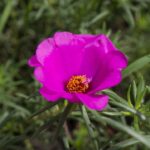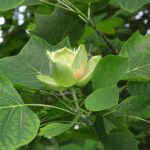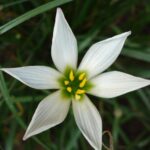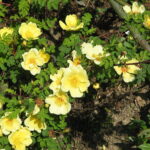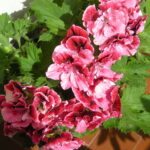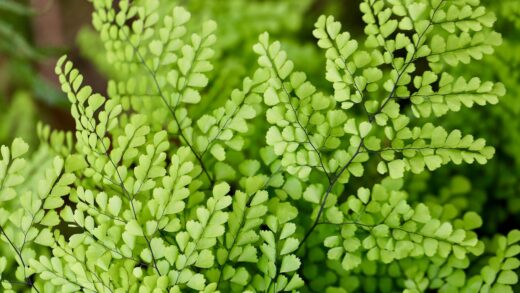The watering and fertilization of the bachelor palm

Mastering the art of watering and fertilizing the Zamioculcas zamiifolia is fundamentally about understanding its nature as a drought-tolerant plant. The most common pitfall in its care is overwatering, a mistake born from good intentions but with potentially fatal consequences. The plant’s large, succulent rhizomes are adapted to store water for long durations, allowing it to survive the arid conditions of its native Eastern African habitat. Therefore, the cardinal rule is to let the soil dry out completely between waterings. This means not just the surface, but the entire volume of soil in the pot. For many indoor environments, this can translate to watering as infrequently as once every three to four weeks, or even less during the winter months when the plant’s growth naturally slows down. A cautious, “less is more” approach is always the safest path to a healthy ZZ plant.
Before even thinking about reaching for the watering can, it is essential to check the soil’s moisture level. The most reliable method is to insert your finger or a wooden skewer deep into the soil. If it comes out with any moisture or soil clinging to it, it is best to wait longer. Only when the soil is bone dry from top to bottom is it time to water. When you do water, do so thoroughly, allowing the water to run through the soil and out of the drainage holes. This ensures that the entire root system has access to moisture and also helps to flush out any accumulated mineral salts from the soil. After a thorough soaking, it is crucial to let the pot drain completely and never allow it to sit in a saucer of standing water.
Fertilization follows a similarly restrained schedule. The ZZ plant is not a heavy feeder and can thrive for long periods with just the nutrients present in its potting soil. Over-fertilizing can be more harmful than not fertilizing at all, as it can lead to a buildup of salts in the soil, which can burn the roots and damage the plant. During the active growing season, which typically spans from spring through summer, you can provide a diluted dose of fertilizer to support new growth. However, this is more of an optional boost than a strict requirement for the plant’s survival.
When you do choose to fertilize, select a balanced liquid fertilizer formulated for houseplants. It is crucial to dilute the fertilizer to half or even a quarter of the strength recommended on the packaging to avoid overwhelming the plant. Apply this diluted solution once a month or every other month only during the spring and summer. During the autumn and winter, when the plant’s growth naturally slows down, you should cease fertilizing altogether. This rest period is a natural part of the plant’s growth cycle and allows it to conserve energy until the next growing season begins.
The golden rule of watering
The single most important aspect of Zamioculcas zamiifolia care is adhering to the golden rule: water only when the soil is completely dry. This principle is directly linked to the plant’s anatomy and evolutionary history. The thick, potato-like rhizomes located just below the soil surface are highly efficient water storage organs. In their native habitat, these rhizomes allow the plant to endure extended periods of drought. In a home environment, this means the plant has its own internal water reserve and does not require constantly moist soil to survive. In fact, constantly moist soil is its greatest enemy.
More articles on this topic
Forgetting to water your ZZ plant for a few weeks is far less dangerous than watering it a week too early. The consequences of underwatering are usually mild and easily reversible; the leaves might start to look slightly wrinkled or the stems may droop a little. A good, thorough watering will typically restore the plant to its plump, healthy state within a day. In contrast, the effects of overwatering are far more severe and often irreversible. Excess water suffocates the roots, preventing them from absorbing oxygen and leading to the rapid onset of root and rhizome rot.
The frequency of watering will vary significantly based on a number of environmental factors, so it is impossible to prescribe a strict schedule like “water once every two weeks.” The amount of light the plant receives is a major factor; a plant in a bright location will use water more quickly than one in a dim corner. The size and material of the pot, the ambient temperature and humidity, and the time of year all play a role. This is why manually checking the soil moisture is the only foolproof method to determine when it is time to water.
Developing a feel for your plant’s needs is part of the joy of plant ownership. Over time, you can also learn to gauge the moisture level by the weight of the pot. A pot with dry soil will feel significantly lighter than one that has just been watered. By combining the touch test with the weight test, you can develop a confident and intuitive watering routine that keeps your Zamioculcas zamiifolia perfectly hydrated without ever putting it at risk of drowning.
Proper watering techniques
When the time is right and the soil is thoroughly dry, the technique you use to water your Zamioculcas zamiifolia matters. The best method is to water deeply and infrequently. This involves pouring water slowly and evenly over the entire soil surface until it begins to flow freely from the drainage holes at the bottom of the pot. This deep watering ensures that all parts of the root system get a chance to absorb moisture and encourages the roots to grow down deep into the pot, creating a stronger, more stable plant.
More articles on this topic
After watering, it is absolutely critical that the pot is allowed to drain completely. If the pot sits in a saucer or a decorative cachepot, make sure to empty any excess water that collects after about 15 to 30 minutes. Allowing the plant to sit in this standing water is one of the quickest ways to induce root rot, as it keeps the lower portion of the soil saturated. This step is non-negotiable for the long-term health of the plant.
An alternative watering method that some growers prefer is bottom watering. This involves placing the pot in a tray or sink filled with a few centimeters of water. The water is then absorbed up into the soil through the drainage holes via capillary action. This method ensures that the soil is evenly moistened from the bottom up without wetting the foliage and can encourage deeper root growth. Once you see the surface of the soil become moist, remove the pot from the water and allow it to drain completely.
Regardless of the method you choose, using the right type of water can make a difference, although ZZ plants are not overly sensitive. Tap water is generally fine, but if your water is particularly hard (high in mineral content) or treated with chlorine, it can be beneficial to let it sit out overnight before using. This allows some of the chlorine to dissipate. Using filtered or rainwater is an even better option, as it avoids the potential for mineral salt buildup in the soil over time, which can be harmful to the roots.
Understanding fertilization needs
The Zamioculcas zamiifolia is a light feeder, and its fertilization needs are minimal. In its natural habitat, it grows in soils that are not particularly rich in nutrients, and it has adapted to thrive with very little. This means that in a home environment, it can subsist for a long time on the nutrients available in its initial potting mix. The desire to fertilize is often driven by the grower’s eagerness to promote growth, but with the ZZ plant, restraint is key, as over-fertilization can cause more harm than good.
The primary risk of over-fertilizing is chemical burn to the roots and rhizomes. An excess of fertilizer salts can accumulate in the soil, drawing moisture out of the roots and causing them to dry out and die, even when the soil is moist. This can lead to symptoms that mimic underwatering, such as yellowing leaves and wilting stems, which might confusingly prompt a grower to water or fertilize even more. For this reason, it is always better to under-fertilize than to overdo it.
The best time to provide fertilizer is during the plant’s active growing season, which corresponds with the longer days and warmer temperatures of spring and summer. This is when the plant is most likely to be producing new shoots and can make use of the extra nutrients. During this period, a monthly application of a heavily diluted fertilizer is more than sufficient. As autumn approaches and growth naturally slows, you should taper off and then completely stop fertilizing. The plant enters a state of semi-dormancy in the winter and does not need supplemental nutrients.
When choosing a fertilizer, a well-balanced formula is ideal. Look for a liquid houseplant fertilizer with a balanced N-P-K ratio, such as 10-10-10 or 20-20-20. The most important step is to dilute it properly. A safe practice is to mix the fertilizer at half or even a quarter of the strength recommended on the product label. Applying this mild solution to the soil after watering (when the soil is already moist) can help prevent root burn and ensure a gentle delivery of nutrients.
Seasonal adjustments for water and fertilizer
Caring for a Zamioculcas zamiifolia requires an understanding that its needs change with the seasons. The most significant adjustments will be to your watering and fertilizing schedule. During the spring and summer, when the days are longer and warmer, the plant is in its active growth phase. It will be photosynthesizing more and using water at a faster rate. Consequently, you will find yourself needing to water more frequently, perhaps every two to four weeks, depending on your specific home environment.
This active growing season is also the only time when you should consider fertilizing. The plant can utilize the extra nutrients to support the production of new stems and leaves. A light feeding with a diluted, balanced fertilizer once a month from spring through the end of summer will provide a gentle boost. However, always check the soil moisture before fertilizing and only apply it to soil that is already slightly damp to avoid burning the roots.
As autumn arrives and the days grow shorter, the ZZ plant will naturally begin to slow down its growth. Its metabolic processes decrease, and its need for water diminishes significantly. During this time, you must adjust your watering frequency accordingly, allowing for much longer periods between waterings. It is not uncommon for a ZZ plant to require water only once every six to eight weeks during the winter. This is also the time to cease all fertilization. The plant is in a resting period and providing it with fertilizer it cannot use will only lead to a harmful buildup of salts in the soil.
The key to successful seasonal care is observation. Do not stick to a rigid schedule, but instead, let the plant and the soil tell you what they need. Pay attention to how quickly the soil dries out and adjust your routine as the seasons change. This responsive and adaptive approach to care will ensure that your ZZ plant remains healthy and resilient throughout the entire year, respecting its natural cycles of growth and rest.





